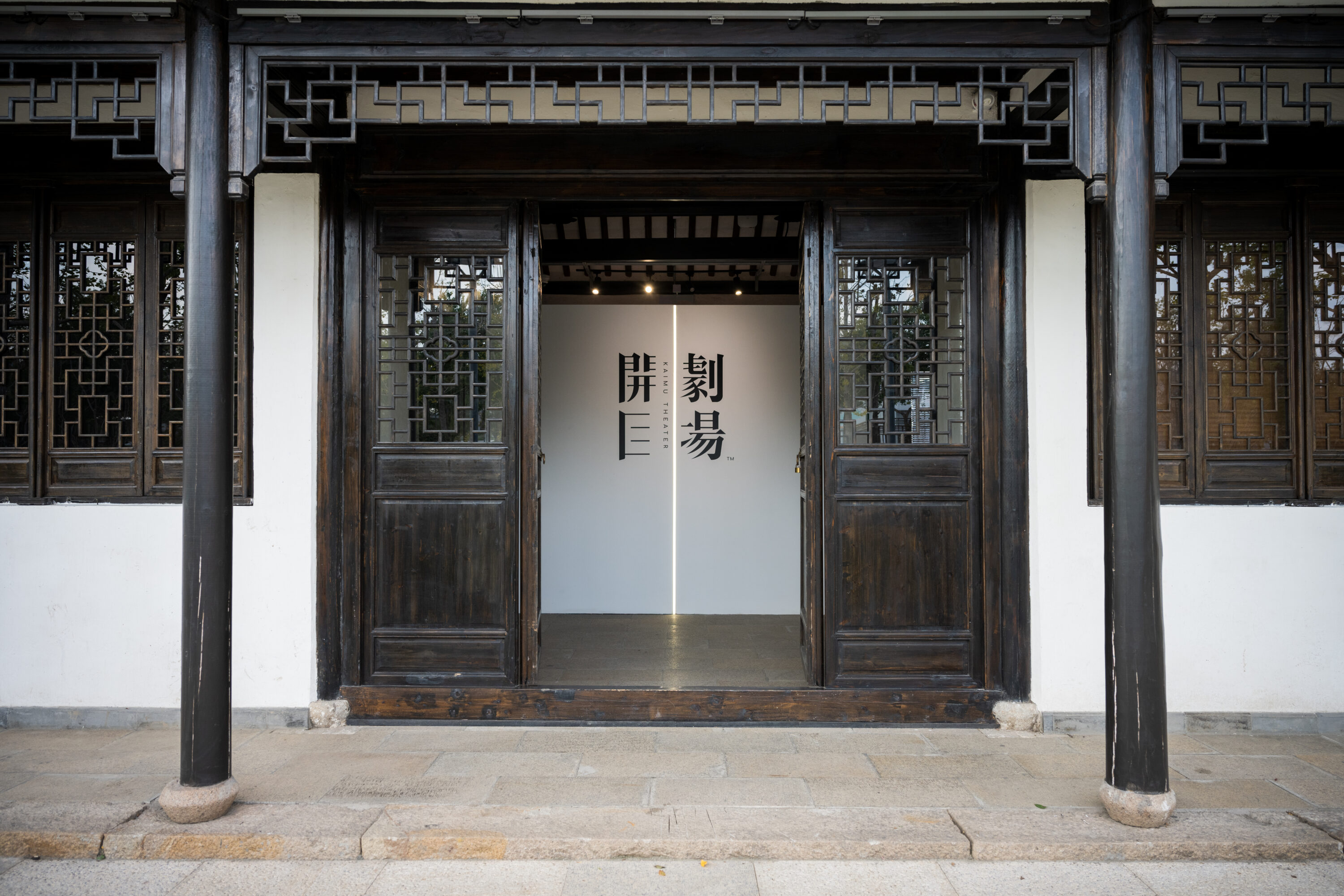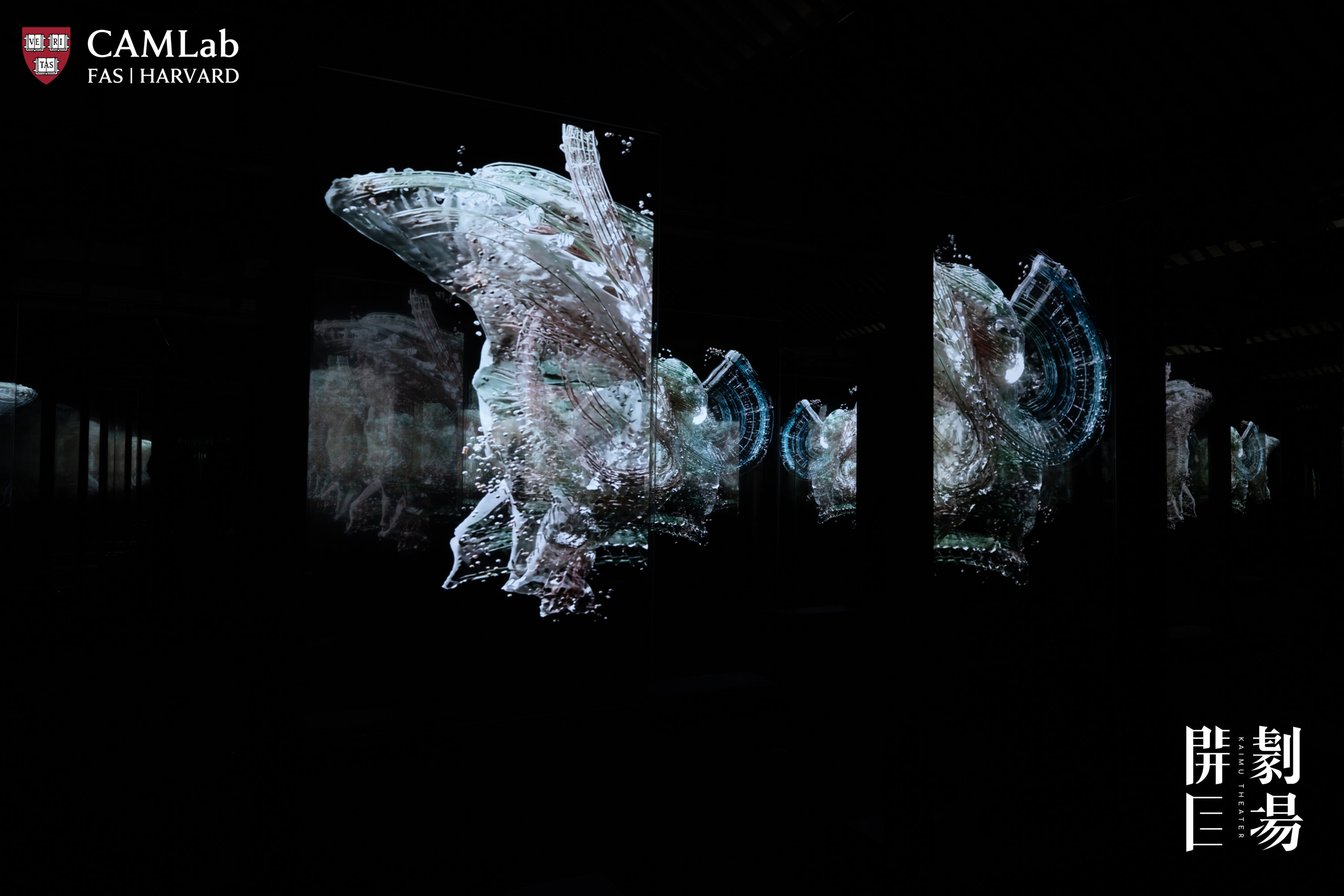Starting October 27, 2023, three featured works from Harvard FAS CAMLab officially premiered at the “Kaimu Theater” in Shanghai’s Panlong Tiandi. The “Kaimu Theater” will serve as a unique window connecting CAMLab with Chinese audiences, and will continue to launch digital spatiotemporal experiences in the future that interpret Chinese cultural legacy through an international perspective and cutting-edge technology.

Kaimu Theater stands as a beacon for immersive cultural exploration, a collaborative creation between Shui On Xintiandi and Shanghai Kaimu Culture and Technology. Our fundamental goal is to transform the audience’s engagement with art, culture, and history through the prism of advanced digital media. We are at the forefront of pioneering multimedia storytelling; there, we integrate immersive exhibitions, digital narration of cultural heritage, and interactive theatrical scenography.
We enhance our initiatives by forming strategic partnerships with renowned academic institutions, artists, technicians, and scholars, blending expertise with innovative media techniques and thought-provoking curation. This synthesis forges compelling narratives that resonate with the contemporary moment and bridge the spiritual and aesthetic depths of Asian history and culture.
Kaimu Theater invites audiences to undertake a spellbinding journey through Asia’s artistic and cultural mosaic, engaging them in multimedia storytelling that celebrates the rich heritage of Asia. Through our lens, audiences encounter a world where tradition meets innovation, creating unforgettable moments of discovery and enlightenment.

One of the most significant cultural heritage sites in the world, Dunhuang preserves more than 400 embellished Buddhist cave shrines dating from the fifth century to the fourteenth century. Covered with murals and sculptures, these cave shrines enclose visitors with an imaginary landscape of Buddhist legends and paradises. Standing out from the rich visual culture of the Dunhuang caves, scenes of celestial dance performances in Buddhist paradises are widely acclaimed as the most representative of artistic achievements at Dunhuang.
Cave Dance harnesses the power of machine learning to bring new insights into the ancient dance forms. Data from static mural drawings and motion capture of professional dancers were used to train a machine-learning model, which generated a human- computer collaborative choreography of animated movement sequences. Through this process, Cave Dance manifests as a set of digital installations that elucidate the multifold culture of dance in Buddhist cave shrines. The installation not only immerses the audiences in a dynamic world of Dunhuang dance, but also leads them into the deeper cultural dimension of Buddhist dance—where audiences are invited to contemplate the themes of body, life, and spiritual transcendence embodied by the celestial dance in the cave.

Shadow Wall addresses a foundational myth of Buddhist art originating around the year 400 CE in the region of Nagarahāra (in present-day Afghanistan), part of the kingdom of Gandhāra. There the Buddha is said to have leaped into the wall of a cliffside grotto, imprinting on it a “shadow image” that was radiantly reflective like a mirror when seen from afar but disappeared into the rocky surface upon approach. Popularized by pilgrims’ accounts, eulogies, and meditation manuals, the “shadow image” became an object of yearning for Buddhist devotees, who sought to visualize it in their minds. In sites such as Dunhuang, Longmen, and Maijishan, Buddhist devotees shaped caves into their own “shadow caves,” transforming physical space into mental theater.
The shadow cave became the prototype for a millennium of icon- and cave-making practices across Asia. This installation aims to explore issues inherent in the shadow cave and their implications, across cultural and historical contexts, for the contemporary practices and discourses of art, media technology, and museology. These issues include the natures of images and vision; theatricality and ritual in aesthetic experiences; and the dynamics between artwork and space, original and replica and ruin, sensory experience and imagination, materiality and transcendence.

Embodied Architecture pursues a new way of telling the master narrative of Chinese architectural history. The artwork centers upon a question: what is the logic and language of design that fundamentally informs Chinese architecture? Here, the Embodied Architecture installation focuses on the monumental pagodas of the Liao dynasty. As we explore the mental blueprints of Chinese Buddhist architecture, we consider space, sculpture, and painting as an organic, interrelated structure. Bringing together architectural history and art history, we unpack the ideas of body, cosmology, and ritual that are embodied by the monuments.
Based on in-depth research and the creative coding and combining of digital technologies, this project manifests in an immersive exhibition form that invites modern visitors to step into the space, culture, and imagination of Chinese architecture. With photogrammetry, digital modeling, CG animation, and mixed reality, the installation unveils the concept of Embodied Architecture by creating a multi-sensorial digital theater of cultural heritage. Combining new media and technology with contemporary expression, Embodied Architecture unveils the imaginary universe embodied by Buddhist monuments, as well as a spiritual journey that explores ascension and transcendence.










